The Amino Acid Collection
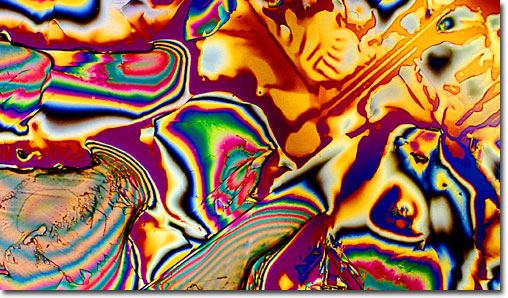
Arginine
The Biochemistry of Amino Acids
Interested in amino acids? Check out our extensive Amino Acid photo gallery.Amino acids are very small biomolecules with an average molecular weight of about 135 Daltons (or atomic mass units, abbreviated AMU). These organic acids exist naturally in a zwitterion state where the carboxylic acid moiety is ionized and the basic amino group is protonated. The entire class of amino acids has a common backbone consisting of an organic carboxylic acid group and an amino group attached to a saturated carbon atom. The simplest member of this group is glycine, where the saturated carbon atom is unsubstituted, rendering it optically inactive. The rest of the 20 most common amino acids are optically active, existing as both D and L stereoisomers. Naturally occurring amino acids that are incorporated into proteins are, for the most part, the levorotatory (L) isomer. Substituents on the alpha (or saturated) carbon atom vary from lower alkyl groups to aromatic amines and alcohols. There are also acidic and basic side chains as well as thiol chains that can be oxidized to dithiol linkages between two similar amino acids. 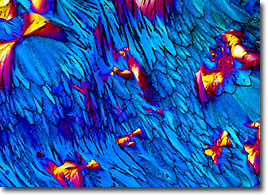
Valine Amino acids are the principal building blocks of proteins and enzymes. They are incorporated into proteins by transfer RNA according to the genetic code while messenger RNA is being decoded by ribosomes. During and after the final assembly of a protein, the amino acid content dictates the spatial and biochemical properties of the protein or enzyme. The amino acid backbone determines the primary sequence of a protein, but it is the nature of the side chains that determine the protein's properties. Amino acid side chains can be polar, non-polar, or practically neutral. Polar side chains tend to be present on the surface of a protein where they can interact with the aqueous environment found in cells. On the other hand, non-polar amino acids tend to reside within the center of the protein where they can interact with similar non-polar neighbors. This can create a hydrophobic region within an enzyme where chemical reactions can be conducted in a non-polar atmosphere. Likewise, enzymes can also have polar amino acid substituents within the active site that provide a polar region in which to conduct biochemical synthesis. 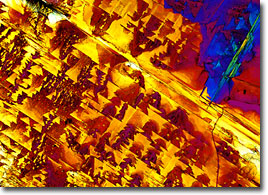
Alanine In addition to their role in protein and enzyme synthesis, amino acids are actively involved in a broad range of functions in the body. For instance, the organic substances help form cells, heal damaged tissues, and produce antibodies. These antibodies are important to the body's efforts to ward off potentially harmful invasions of viruses and bacteria. Also active as metabolic intermediates, amino acids are capable of transporting oxygen through the body and play a part in muscular function. Several of the amino acids, such as the neurotransmitter gamma-aminobutyric acid (GABA) that is found in the central nervous system, but not in proteins, carry out very specific roles in the body. Other examples of such amino acids include carnitine, which is concerned in fatty acid transport within a cell, as well as ornithine and citrulline, both of which are key components in the body's urea cycle. 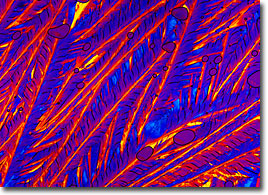
Lysine The human body is not able to produce all of the 20 amino acids that are needed to synthesize proteins. At least 8 of the important organic compounds must be consumed in the diet and two additional amino acids (histidine and arginine) are essential only to children. In other animals, essential amino acids differ somewhat. Cats, for instance, were discovered in the 1970s to lack the ability to synthesize taurine, an amino acid not considered essential for humans or the other favorite family pet, the dog. Before this discovery cats commonly suffered vision problems, heart disease, cirrhosis, and other problems due to diets that did not include enough taurine. Since then, however, most brands of cat food have been reformulated to include sufficient amounts of the amino acid. Human symptoms of an amino acid can be similarly serious, although the precise effects are dependent upon which of the compounds the body is lacking. A deficiency of all amino acids is characterized by malnutrition, anemia, and the deterioration of muscle tissue. 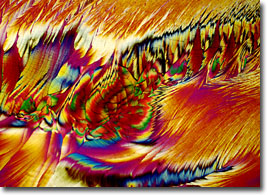
Methionine Essential amino acids are generally contained in the greatest quantities in meat, poultry, fish, eggs, and other animal products. They are also, found, however in grains, legumes, and similar vegetable sources of protein, though one or more essential amino acids may be missing from such foods. For this reason, vegetarians are generally urged to carefully consume a wide range of foods in order that they regularly obtain the complete array of essential amino acids, since different plants lack different types of the important compounds. Nevertheless, amino acid deficiencies are extremely rare in the United States, since Americans commonly consume twice as much protein as is considered necessary each day. Moreover, for athletes or other individuals who need greater amounts of amino acids than most people, supplements are widely available. Some amino acids are even prescribed as a form of medical treatment. Lysine, for example, is utilized to suppress the herpes virus and phenylalanine gains use in some pain and depression therapies. Nevertheless, over-consumption of amino acids can be hazardous, since the compounds can be toxic in excessive quantities. |
© 1995-2025 by Michael W. Davidson and The Florida State University. All Rights Reserved. No images, graphics, software, scripts, or applets may be reproduced or used in any manner without permission from the copyright holders. Use of this website means you agree to all of the Legal Terms and Conditions set forth by the owners.
This website is maintained by our
|